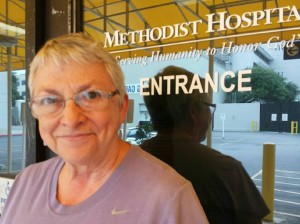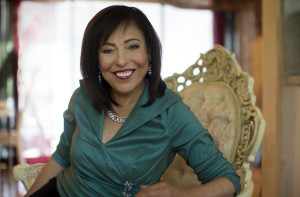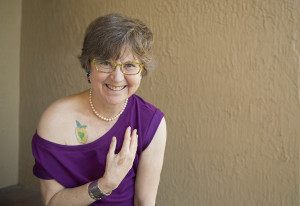 We sought out top breast surgery teams so women will know what breast reconstruction is like in the best hands. We’re here in San Antonio to watch the PRMA plastic surgery group at work, in their operating home at Methodist Hospital. They perform more than 600 flap procedures a year.
We sought out top breast surgery teams so women will know what breast reconstruction is like in the best hands. We’re here in San Antonio to watch the PRMA plastic surgery group at work, in their operating home at Methodist Hospital. They perform more than 600 flap procedures a year.
All posts by bcsurgery
Implants: Over or under the muscle?
For years, plastic surgeons have preferred to place breast implants under the main muscle in the chest.
But younger, athletic women having preventative mastectomies and some plastic surgeons have begun to challenge that conventional wisdom.
If a woman is very athletic or lifts weights, some plastic surgeons believe she is better off having what doctors call pre-pectoral placement of the implant. The method is used with additional cadaver and animal tissue known as acellular dermal matrix products, or ADM.
The discussion emerged at the annual conference last week in Philadelphia of Facing Our Risk of Cancer Empowered, or FORCE. Women asked about the issue at several of the conference’s surgery sessions, which included a leading speaker on the subject.
Dr. Hilton Becker, a Boca Raton, FL. plastic surgeon, said he has performed pre-pectoral implant placement for about seven years, after seeing too many patients develop distortions in their implants when they exercised or the devices moved too high up on their chests. He calls the first problem “animation distortion” and the second, “high-riding implants.”
He uses an adjustable saline implant that can be filled with salt-water in stages. He also adds an ADM product to hold the implant in place, over the muscle.
When the implant is filled to the desired size of the breast, Becker takes out a tiny valve from the implant and closes up the site. Sometimes, he swaps the temporary saline implant for a silicone one, for women interested in the more natural look they think silicone provides. He said adjustable gel implants are available in Europe and many other regions but not the U.S.
Dr. Scott Spear, a Chevy Chase, MD. plastic surgeon, said he has seen doctors change attitudes on the subject but he urged caution about the placement of implants.
Doctors usually place implants under the pectoral muscle because they will be “less noticeable, more protectable,’’ he said. The addition of ADM products on top of an implant also will change the look of an implant, he said. “It’s not going to look as soft.” Spear said women should raise the issue with their plastic surgeons if they are very athletic.
“If someone came to me and said they were really worried about the animation thing and they were worried about lifting weights, I’d do a pre-pectoral placement.”
Dr. C. Andrew Salzberg, a Tarrytown, NY plastic surgeon, said “has been doing pre-pectoral implant placement for many years. “You need this” if you work out every day, he said. There are some theoretical risks doing this. If you were to develop cancer behind the implant, this would hide it a little bit. In cancer patients, they may be an issue. In prophylactic patients, it’s not.”
Becker’s Web site has a power point presentation explaining the method and other reference materials, http://www.beckermd.com/…/02/International-breast-meeting-.….
A baby, two years after surgery and chemo
Inside the world’s only hospital for breast cancer surgery and reconstruction
 St. Charles Surgical Hospital and the adjacent Center for Restorative Breast Surgery is the world’s only dedicated private hospital that performs breast cancer surgery and reconstruction. We got rare access to follow a 35-year-old woman and BRCA1 carrier through her preventative bilateral mastectomy with tissue reconstruction. Both her mother and sister had their mastectomies here too. Our upcoming book will tell her story, as well as provide a behind-the-scenes look at the latest breast reconstruction with tissue procedures.
St. Charles Surgical Hospital and the adjacent Center for Restorative Breast Surgery is the world’s only dedicated private hospital that performs breast cancer surgery and reconstruction. We got rare access to follow a 35-year-old woman and BRCA1 carrier through her preventative bilateral mastectomy with tissue reconstruction. Both her mother and sister had their mastectomies here too. Our upcoming book will tell her story, as well as provide a behind-the-scenes look at the latest breast reconstruction with tissue procedures.
Reaching minority women with model programs
Previvors have no higher recurrence odds, large UK study finds
Younger breast cancer survivors with a family history of the disease are no more likely to have it return, a large study finds in the UK. http://www.medicalnewstoday.com/articles/294103.php

Health Insurers Must Fully Cover Genetic Tests, Screening
Insurers must cover preventive screening, genetic counseling and genetic testing without cost-sharing, according to new federal requirements. http://www.nytimes.com/2015/05/12/us/health-insurers-ordered-to-heed-law-on-free-contraception-coverage.html?ref=health&_r=0
More than one breast reconstruction surgery likely, study finds
Most women need several operations after a mastectomy to finish their breast reconstruction, a new study has found.
Of nearly 4,000 women studied, 88 percent had at least two breast reconstruction operations, 65 percent had more than two surgeries and 39 percent had four or more, according to the University of Toronto researchers. They presented their findings in Orlando at the annual meeting of the American Society of Breast Surgeons. The study is based on data from women who had breast reconstruction procedures between 2002 and 2008.
Breast revision surgery, as well as the desire of some women to forego further surgery despite sometimes unsatisfying reconstruction results, are important topics to be covered in the upcoming book, “Breast Cancer Surgery & Reconstruction: What’s Best for You” by Rowman & Littlefield Publishers, Inc.
“We hope to give women the latest medical information on breast reconstruction but also share insights from other women who have had the surgeries,” said author Patricia Anstett. “These are memorable stories that raise important issues other women will connect with,” said Anstett, a medical writer. Photographs by two-time Emmy-award-winning photographer Kathleen Galligan accompany the stories.
The origin of the word previvor
What’s the origin of the word previvor?
Florida veterinarian Sue Friedman coined the term after realizing that women with a hereditary risk of breast and ovarian cancer needed a word to describe them. She had started a non-profit, Facing Our Risk of Cancer Empowered (FORCE) on New Year’s Eve, 1998, only to find women with gene mutations felt excluded in breast cancer circles. She is both a breast cancer survivor and a BRCA2 gene mutation carrier.
“The medical community was using the term, unaffected carrier,” she recalled in an interview. “It meant you carried a gene mutation but you were unaffected by the disease.’’
Unaffected hardly seemed to be the case, she said.
“As I started meeting more women with the genetic mutation and I saw how they approached the idea of support, kind of apologetically, I thought, we need to unite this community. One of our board members said on our message board, I need a label. I lost my mom to cancer. I lost my breasts to cancer. I lost my fertility to cancer. But I don’t have cancer. What am I? So we actually put out a request through our community for a call for terms. There were some light-hearted ones. At the end of the day, I came up with the term, a previvor with a predisposition to cancer. Everyone didn’t love it. There was some high-profile criticism of the term. It was a way to provide a label to unite a community of stakeholders who really were not in a place at the table.”
Not long afterwards, Friedman was delighted to read that Time magazine chose the word as one of the 10 best new words of the year.
FORCE will hold its annual conference June 18-20 in Philadelphia. For conference details and other resources, go to: www.facingourrisk.org. Friedman and other previvors will tell more of their stories in our upcoming book, “Breast Cancer Surgery & Reconstruction: What’s Right for You. “
Flat, fabulous and full of fight
Most women don’t choose immediate reconstruction and some, like Ann Fonfa, of Delray Beach, FLA., never do. Today she heads the Annie Appleseed Project, a non-profit which provides holistic resources to cancer patients and hosts an annual conference. For more information, check them out on Facebook or visit their website.



